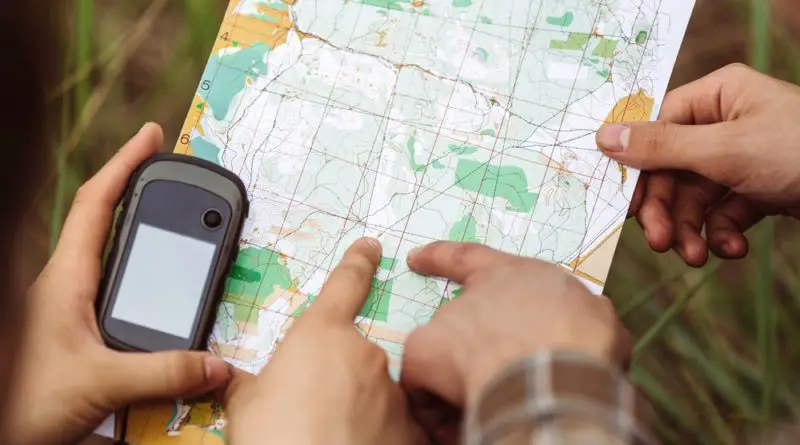Last modified on March 23rd, 2021 at 10:53 am
Geocaching : Doing outdoor Activities in a Fun Way
Introduction
Have you ever played the treasure hunt game?
As a child, you probably searched and perhaps even dug everywhere to find hidden goodies left by someone, maybe even a pirate. It was an exciting game that had some thrill in it.
People have modernized the treasure hunting game. Today, there’re bottles or containers with goods, paper puzzles to solve, or some reward that you get for finding that hidden container. We call this practice—finding treasures hidden by other people—geocaching.
In geocaching, you use GPS coordinates to find a geocache, the container, or marker with the reward. Over 3 million geocaches are waiting for you to find worldwide, with the geocaching game played in over 191 countries on all seven continents.
The fun part is that geocachers have over 36,000 annual events and gatherings to socialize and play the game. It’s pretty serious, and you can play it when engaging in your outdoor activity.
Do you want to learn exactly how to play it?
Well, let’s get into it.
Geocaching 101
Credit source https://www.istockphoto.com/photo/geocaching-gm182861992-13992173
Geocaching is a high-tech, grown-up version of treasure hunting. It is a meaningful game played all over the world, including in Antarctica. It is an outdoor activity that requires participants to use a GPS device or a mobile phone, along with other navigational equipment, to hide or find containers at specific locations with coordinates.
The game began on May 3, 2000, after the big blue switch on May 2, 2000, when the US government made GPS more responsive and available to civilians. After the Big Blue Swith, 24 global satellites could instantly process information and new orders, improving GPS accuracy tenfolds. During that day, thousands of GPS receivers became extraordinarily accurate and reliable.
On the following day, Dave Ulmer, a computer consultant, placed the first geocache in the woods of Portland, Oregon. He placed various items in the container, including a slingshot, software, books, videos, a logbook, and a pencil. He then uploaded the coordinates of the container online. They were:
N 450 17.460 W 1220 24.800
A man called Mike Teague located this container 3 days later.
The geocache was destroyed later by a lawnmower, but the practice held on. Today, there are over 3 million geocaches, with millions of people playing the game. The sport has evolved to a point where there are geocaches on the moon.
Groundspeak, Inc., a geocaching company, makes extraterrestrial caches possible on the Moon and Mars. And so far, only one geocache has gone extraterrestrial, i.e., GC1BE91. If you ever travel out of this planet, the geocache orbits the earth at 17000MPH at an altitude of 250 miles. There is an astronaut’s travel bag inside as a token.
When geocaching started, it was known as GPS-stashing or GPS stash hunt, which later changed to geocaching because people thought “stash” had a negative overtone or implication.
Many people—myself included—love geocaching for the tremendous benefits that you can get from it. Let’s look at some below.
The Main Benefits of Geocaching
Here are some of the benefits you can reap from geocaching:
It boosts your immunity
A recent study by a physiological anthropologist, Yoshifumi Miyazaki, who is the vice-director of the Center for Environment, health and Field Sciences at Chiba University in Tokyo, and Qing Li of Nippon Medical School in Japan, found that leisure walks through the forest benefit your immunity.
Walking or hiking twice a day for three days raises your white blood cells by 40%; the improved white cells count remained 15% higher even after completing the exercise.
Because it calls for being in nature, sometimes off the beaten path, engaging in geocaching will improve your body’s capacity to handle diseases. When you engage in it, you will barely fall sick from ailments such as the common flu.
It relieves stress
Yoshifumi Miyazaki’s research team also found that leisure walks in the forest reduce stress hormones by up to 12.4%. It also reduces activity in the brain region responsible for fight or flight behaviors by 7%. The neurons responsible for this reaction are called the sympathetic nerve.
Geocaching will do more than relieve your stress; it can also help you become calmer. When you are calm, you can make rational decisions even in the most stressful situations.
Decreases your blood pressure
The same researchers found that nature/leisure walks and hiking decreased blood pressure by 1.4% and your heart rate by 5.8%, helping protect you from heart attacks.
The activity taps into your creativity
A study by psychologists from the University of Utah and University of Kansas found that interacting with nature had real, measurable benefits to your creativity. In the study, a backpacker scored 50% better after being in nature for four days.
This study involved 56 people: 30 men and 26 women. After backpacking for four days, all these people scored averagely higher than before they engaged in the activity.
If you are interested in being more creative, try geocaching. Interacting with nature has a way of helping your brain improve. On the same note:
Geocaching improves your memory
Geocaching is a fun activity that involves solving puzzles: GPS puzzles. It entails searching and finding hidden containers. You will not just find a cache placed on a plain site. After finding the exact coordinates, you have to search for the geocache.
Doing this is rewarding to your brain. It keeps your brain cells active and going, in the process improving your memory. According to this research study, engaging in a cognitively stimulating activity like geocaching can also reduce your chances of developing cognitive impairments like Alzheimer’s.
Furthermore, since it’s part of an exercise, geocaching can boost your mental health. Solving cache puzzles is like an exercise for your brain. The more you engage in it, the better your mental health shall become. Interacting with nature also helps ease the symptoms of depression.
These and many other reasons are why you should take up geocaching today.
Getting Started With Geocaching
Before we look at how to play the game, there are some terms used in geocaching that you should know about.
Common geocaching terms you should know
The geocaching terms you should know are
- Geocache: I have probably used this a couple of times, but just as a reminder, a geocache is the container that you have to find when playing the game. It includes a logbook and some little tokens for finding it.
- Cache: Some people shorten the term geocache to “cache.” Thus, “cache” is another term for a geocache, a shorter, more convenient term.
- Trinket: These are the little extra tokens you find in the geocache. It could be anything: whatever someone decides to gift you.
- A logbook: When you find a cache, you need to be recognized or acknowledged. Therefore, you will find a piece of paper or a small book inside the cache, where players sign to show you are one of the people that successfully traced the hidden geocache.
- Geocacher: This a term for people playing the game. When you decide to participate in geocaching, you will be a geocacher.
- Muggle: This is a term for people not participating in the game. You can also call them “non-geocachers.” When playing the game, many geocachers advise proceeding with stealth when around non-geocachers because they can vandalize the cache.
- Trackables: They can be travel bugs or geocoins. In some geocaches, you will find a small item with a unique identification code trackable online. These items are to be moved from one geocache to another to make the game fun. Your trackable can move from the US to the UK if people comply and if no muggle vandalizes the geocaches.
Those are the standard geocaching terms. Now let’s look at how to play the game:
How To Play Geocaching
The first thing you need to do is to head over to Geocaching.com and create an account. You’ll find all the coordinates with the geocaches you need to find on this website.
Immediately after signing up and in, you’ll notice a search bar that you can use to enter the location you would like to visit. The website will then give you a list of all the geocaches available in that location. You can also click click on the lens logo, and the website will provide you with a list of geocaches around you.
Choose the geocache you want to find, enter the coordinates given about it and enter it on your GPS receiver—you can also use a GPS-enabled phone. Google maps can also help.
The next step is to locate the geocaches using the coordinates you have.
You should know that the GPS devices do not give the exact location; the best ones are accurate to about 15 to 30 feet. Therefore, when you get there, you will have to search manually to find the cache. It can be hidden anywhere, under a rock, on a tree branch, buried in the ground, etc. It is your job to find it.
When you find the cache, the first thing you should do is to mark its exact placement, then open it, and sign the logbook. Reward yourself with some trinkets, and leave some gifts for the next person; remember that the game is all about courtesy among geocachers. When you take a gift, leave something of equal or greater value.
After all of that, return the geocache exactly as you found it. The locations are already registered online; tampering may make it hard for other geocachers to find.
Lastly, go online at geocaching.com and share your experience with other geocachers. You can also appreciate the previous finders and the gifts they left for you.
How To Add Your Own Geocache
After playing the game, if you feel inspired to contribute to geocaching by adding a cache of your own, you can do so; the process is simple.
Log into your geocaching account. Click on the Menu tab, find “Hide a geocache,” and click on it. You will see a video and a set of guidelines to follow before hiding your first geocache. The geocaching team (geocaching HQs and community volunteers) will review your submission to confirm that you followed the guidelines before allowing you to add your cache.
There are some rules you will have to follow, for example:
- You should have found at least 20 geocaches before adding your own.
- You have to obey all the local laws and policies that apply to placing the geocache itself and journeying to reach it. Always place the geocache where other geocachers won’t have issues like trespassing or any prohibited access.
- You should then get permission. You can place the geocache on public or private property. You should confirm with the reviewers that you are allowed to place the geocache there.
- The location you choose must be accessible— long-term access. Places that are accessible for more than three months are the ones published.
- The location should also be available on most days of the week.
- Also, you should not damage any property when placing your geocache, which also involves burying. The only time you can bury a geocache is if you have explicit permission to do so. While placing your cache, you should not damage or destroy any property, either public or private.
- The container must be waterproof and must contain a logbook.
And many more. Visit geocaching.com guidelines to see all you’re required to do and how to apply.
Conclusion
Geocaching is a great activity to try. The puzzles are very satisfying to solve with different levels of difficulty for different caches. If you like a challenge as much as the next person, you can choose to find geocaches with the highest rating: 5.
If you’re an outdoor enthusiast, geocaching is a must-do activity. Try it today!





